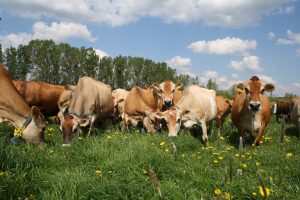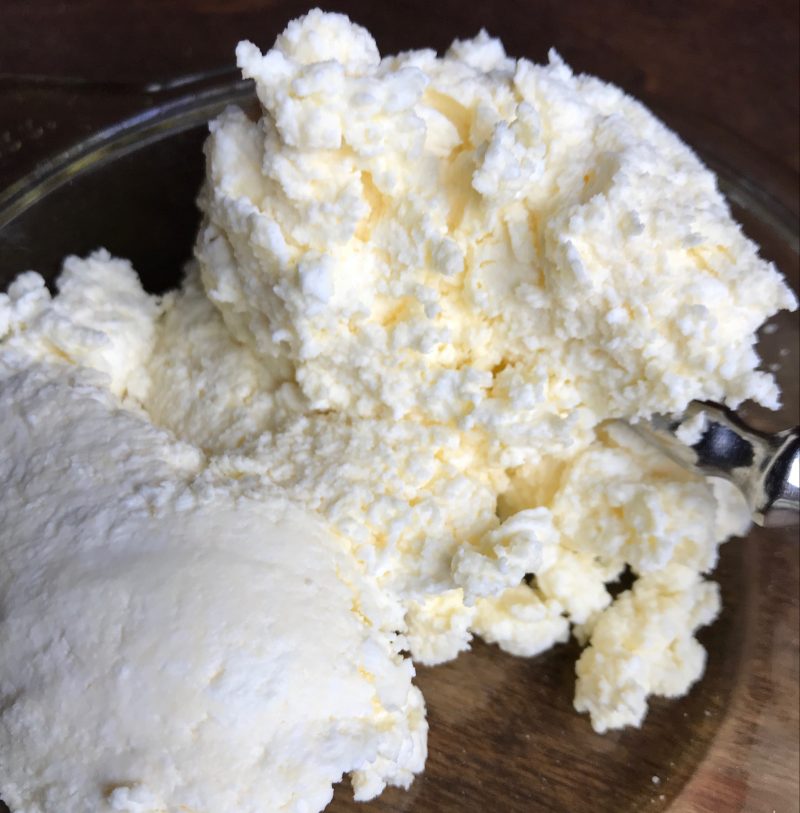This a monthly series which I have been publishing for years. You can subscribe here, to get the latest cheese delivered directly on to your screen.
I’m a total quark addict. On dark bread, with a bit of salt, and my day promises to be a good one. Alas, I travel a lot, and breakfast buffets have their own ideas about what and how to eat in the morning. My go-to ersatz for quark tends to be cream cheese, neatly, cleanly packed in small plastic tubs with the name of a large city on the American east coast on their silver lid. It tastes alright, but is a highly processed, industrial product. In the beginnings cream cheese used to be easy enough to make: cultured, curdled and drained milk with some cream added, and lightly salted. Mrs Beeton, in my 1923 edition, uses double cream, which she tells us to drain with the help of a clean, wet muslin cloth in a cool spot for six to seven days and lightly press the result for another two or three days. What you can find on today’s supermarket shelves however contains not only milk, cream, salt and cultures, but also guar, carob bean gum or carrageenan as stabiliser, thickener or emulsifier. It keeps almost forever and tastes always the same – good news, bad news, who knows…

But the next step up from quark can take a very different form, as demonstrated by the Stadtkäserin (literally urban or city cheesemaker). Astrid Zand, blond, alert and super-focussed, is the prototype of a dairy newcomer, what we call „Quereinsteiger“ in German, opting for a completely new career. She decided to follow her dreams and build her own cheese dairy, somewhere in or near Berlin. She is very thorough in everything she does (first thing she did was to take a state-approved agricultural diploma) and persistent (without that she’d never made it through all the logistical and bureaucratic hurdles). After a long search she came across the former agricultural cooperative in Baruth’s glacial valley, an hour’s drive south of Berlin, in the Fläming region. There somebody had built up a Jersey herd because he just liked the beautiful, lively cinnamon-coloured animals. Originally they stem from the channel island and during the 19th century were bred for the most concentrated of cow’s milk.

On her website Astrid Zand writes: Jersey milk is full fat milk in the most literal sense of the word – with plenty of nutrients and very rich: with 20 percent more protein, around five percent fat and an above average content of calcium, omega-3 and vitamins. She pasteurize, but does not homogenize before bottling it (be careful: once you’ve experienced this in your coffee there is no going back to the low-fat UHT stuff!), working it into quark (equally delicious), and cream cheese.
Her cream cheese (she actually calls it fresh cheese) doesn’t need any extra addition of cream and no thickener. In the morning it greets you with a warm yellow glow as if the soft morning sun was shining right onto your table, balancing refreshing, lively acidity with milky sweetness and exactly the right amount of salt… You’ll find yourself instinctively licking your lips after a big spoonful of it, because the wonderful, delicate Jersey fat is coating them so softly… as if you’d treated yourself to the most exclusive of lip care products.

The Stadtkäserin’s slogan is: Jersey milk meets craftsmanship. Indeed. This Sunday you can meet her in person at Cheese Berlin! Her milk and the solid stuff made from it is also sold at some of the best Berlin delis and cheese counters. And she plans to enlarge her portfolio with „real“ cheeses as soon as possible – we can’t wait. A lack of milk shouldn’t be the problem (around 150 cows are grazing on Baruth’s luscious green pastures). Then I’ll have another reply ready when being asked aggressive questions by local politicians why the hell they are forced to buy Bavarian cheese (as happened at the last StadtLandFood festival). First: Bavarian cheese is fine. Second: it’s not true. And third: provide better conditions for motivated cheese entrepreneurs such as the Stadtkäserin!
This a monthly series which I have been publishing for years. You can subscribe here, to get the latest cheese delivered directly on to your screen.
If you enjoyed reading this, you might consider clicking on the button below and supporting me in my work. I’d be more than happy.
Thank you.
